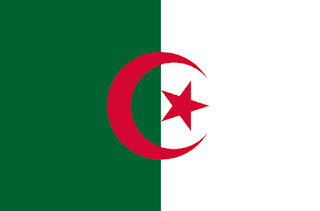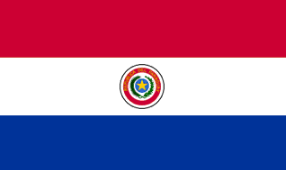FACTS ABOUT SENEGAL
AMAZING
FACTS ABOUT SENEGAL
1.
The official name of Senegal is the “Republic
of Senegal”.
2.
Dakar is the capital city of Senegal.
3.
The total population of Senegal is 14,320,055.
4.
The natives of Senegal are called
Senegalese.
5.
The CFA franc (XOF) is official currency
of Senegal.
6.
Senegal shares a border with The
Gambia, Guinea, Guinea-Bissau, Mali, and Mauritania.
7.
In the 16th century when the Portuguese
visited the country’s coast, the fishermen said “sunu gaal”, which translates
into “these are our boats”. The Portuguese, who understood nothing, simply
named their land “Senegal”. Classic colonizers!!
8.
The European powers that engulfed much
of Senegal’s history are the French, Portuguese and the British. The French had
their presence way back in the 15th century, at the port of St.-Louis. They
left the country in August 1960.
9.
Senegal’s location towards the west
coast made it a hub for the international slave trade of the 18th and 19th
century. Gorée Island, in particular, became a major transit point of the Atlantic
Slave Trade.
10.
In the 17th and 18th century, the world
knew Senegal for three things; slaves, ivory, and gold. These things attracted
not only traders but also many pirates of class and repute.
11.
The House of Slaves and its iconic “Door
of No Return” is a melancholic reminder of Senegal’s tryst with the slave trade
history.
12.
In contemporary times, Senegal is very
close to France. In fact, the very flag of Senegal has adopted the French
Tricolore style. So the flags of both look the same, except for the color.
13.
Senegal merged with Gambia, to form
Senegambia in 1982. But apart from the unification of the names, nothing else
changed much. The two countries still maintain border and neither care to unify
with the other.
14.
Senegal is the only country in West
Africa which wasn’t overrun by a military coup. Its democratic stability has
earned it many allies in Europe and the Americas.
15.
The capital of Senegal is the port city
of Dakar. Its history has shaped it to be one of the most liberal and
cosmopolitan cities of Africa.
16.
The Place de l’Obélisque is the nerve
center of the whole country. It is the central plaza of Dakar and all the
important moments of Senegal’s modern history passed through here.
17.
Senegal was a pivot for The Negritude,
which was a literary movement in the 1930’s-1950s. Born in Paris, it had many
notable Senegalese people who later spearheaded the decolonization of Africa.
18.
Senegal’s national flag bears three
colors; red, yellow and green. They are the official Pan-African colors and a
star at the middle represents universal unity.
19.
In Senegal, taxis have tails. Yes, an
artificial tail made of goat or sheep hair and it supposedly brings good luck.
20.
Senegal, being a Muslim country, takes its
sacrifices very seriously. The Tabaski or Eid al-Adha is a time when sheep and
goats sell like hot cakes when every family wants an animal to sacrifice. Not a
great time for PETA to be in town.
21.
The sheep have the time of their life
when they are alive. Every Sunday on Dakar’s Yoff Beach, you can find hordes of
sheep enjoying their Sunday afternoon spa and bath in the warm tropical waters
of the Atlantic. It’s a tradition to take care of your sheep in Senegal.
22.
Griots are the traditional storytellers,
singers, poets, musicians, and oral historians. They have been known for their
skills oratory and lyrical mastery. Basically, griots are the original father
of rap music.
23.
The Senegalese coast was the filming
backyard of the French movie industry. From 1960 to 1970, Senegal saw a film
industry saw a mini-renaissance.
24.
Senegal’s French connection has improved
its movie-industry drastically. The Black Girl (1966) is the first Sub-Saharan
African film by an African filmmaker to compete with the global cinema standards.
25.
“Borom Sarret”,
also known as The Wagoner, is a film often considered the first movie ever made
in Africa by a Black African and was filmed in Senegal in 1963.
26.
The Manantali Dam in the Senegal River
has become a “poster child” of bad dams. It has become a classic case study for
things that can go wrong in dam-building.
27.
In the year 2016, twenty-five fishermen
were mauled to death in the Senegal River. The killer is the most unusual
suspect of all the peaceful hippopotamus.
28.
An ancient Greek guy, who’s quite famous
on Wikipedia, Pliny the Elder named the Senegal River, “Bambotus”, which
simply means hippopotamus. Though “Bambotus” is way better a name than
“Pliny”.
29.
The “Gateway to Africa” tag was
earned due to the presence of the Senegal River, due to which the Portuguese
and the French were able to make inroads to Sudan and Central Africa.
30.
The Senegal River is dotted with a
number of ethnic tribes each distinct by their animist beliefs, practices, and
ceremonies, dressing styles, dances, music, food, etc.
31.
The Senegal River was a major link in
the Great Trans-Saharan trade across the vastness of Africa. It helped develop
contact between the Morocco and the Ghana Empire in the Middle Ages.
32.
The common lingo of Senegal has a word
called, “Teranga”. It has a very sweet and hospitable meaning and has become
the identity of Senegalese people. It means helping a person to come to your
land and settle down.
33.
Senegal has two prominent nicknames; the
land of Teranga and the gateway to West Africa. The equator passes through
Senegal and hence it is one of the most humid places on earth. The weather is
same throughout the year; scorching sun during the day accompanied by
thunderstorms in the evening.
34.
The “madd” fruit is native to
Senegal and sells well in the international market. Have your full share if you
ever land at Senegal.
35.
Dakar is home to the tallest statue in
Africa. The African Renaissance Monument built in 2010, stands at an impressive
49 m, but still a meter short of a half-century.
36.
Forget your conventional dance moves and
learn the native Senegalese “Sabar” dancing. It will burn your calories
faster than the speed of light.
37.
Senegal has the honor of having the
westernmost point in the whole African Continent. It’s called Pointe des
Almadies, and also happens to be a surfing hot-spot.
38.
Music is the lifeblood of the Senegalese
people. In fact, indigenous musical instruments like kora and balafon, are
mentioned in the very first line of Senegal’s national anthem.
39.
Senegal has unwantedly won the “worst
non-military disaster in maritime history” tag, when “MV Le Joola”, a
Senegalese government ferry capsized, killing 1,863 people.
40.
A Senegalese wedding is an elaborate
affair. First, the groom goes to the bride’s place with Kola nuts and not
rings. If the bride accepts the nuts, the proposal part is over. Next, the
bride goes to the groom’s family to get married with money, rice, sweets,
fruits and the humble sheep…never forget the sheep in Senegal.
41.
Senegal’s grasslands have given the
country its two national symbols, the baobab tree, and the red lion.
42.
The official language of Senegal is
French. There are native languages like Wolof, Soninke, and Mandinka.
43.
Senegal is a paradise for footballers.
Many prominent players like El Hadji Diouf, Henri Camara, Ferdinand Coly, Bouna
Coundoul, etc. have been inducted into the European League from this country.
44.
Senegal Exports:
fish, groundnuts (peanuts), petroleum products, phosphates and cotton.
45.
Senegal Imports: food
and beverages, capital goods and fuels.
46.
The internet country code for Senegal is
.sn.




Comments
Post a Comment